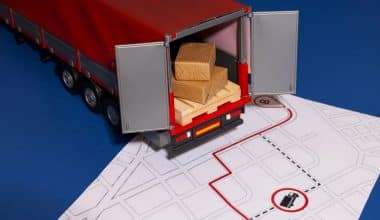A lease is made between a lessor and a lessee when the lessor agrees to let the lessee use the lessor’s property under certain conditions. Even though the word “lease” strictly means “to let under the terms of a contract,” it is often used to mean “renting on a lease.” In a lease, the right to use a piece of property is like an intangible property right. This article talks about what a lease is on a house with an example, its 3 main types, and its advantages. It also talks about lease vs rent.
How Do Leases Work?
The contract between the lessor and the lessee is called a lease. A lessee rents a property from a lessor (sometimes called a tenant). A lease can be made over the phone, but a written contract is better. Each party agrees that the other understands how much the rent is, how long the lease is, and what penalties can be imposed if either party breaks the terms and conditions of the lease.
A lease doesn’t have a standard format, but they all have some things in common. Included are the rental price, the date when payment is due, and the date when the lease ends. Most landlords require tenants to sign leases before they can move into a rental property.
Most residential leases have some terms that apply to everyone. Contracts for commercial real estate, on the other hand, are often tailored to each tenant and can last anywhere from one to ten years. Larger businesses, in particular, may need more time and detail in their leases.
More Information
Depending on the details of the situation, breaking a lease can cause anything from a small inconvenience to a big loss of money. If tenants break their leases without first talking to their landlords, the landlords could sue them in civil court or hurt their credit. Tenants who don’t pay their rent on time may have trouble finding new housing and face other problems if bad information about them shows up on their credit reports.
Tenants who want to end their leases often have the option of negotiating with their landlords or getting legal help. When renters give the landlord the required amount of notice or forfeit their security deposit, the landlord usually does not take any further action against them.
If the landlord doesn’t do what they said they would do in the lease, or if the tenant has to move for reasons beyond their control (like a job transfer or a divorce), some leases let the tenant get out of the lease early. A tenant might be able to get out of a lease if, for example, the landlord doesn’t fix things when they need to be fixed.
The terms of a lease must be legal in the places where they apply. So, a clause that says the landlord can enter the property at any time without giving notice or that says the landlord can take legal action to get more than the statute of limitations allows is not enforceable.
What Is Lease With Example?
Leases, which are legally binding contracts, say how to rent out land, buildings, and other types of property. These contracts spell out in detail what each party needs to do to put and keep the agreement in place, and each party can legally enforce them. For example, in a home lease agreement, you can expect to find:
- The address of the house.
- Responsibilities of the landlord and tenant.
- Payment for the rental space.
- The due date for rent.
- Clauses for ending a rental agreement policies about pets during the lease term.
- Another detailed example of a house lease that matters just as much.
What Are the 3 Main Types of Lease?
Even though leases can be very different, there are a few that come up often in the real estate market. The structure of a lease is based on the market and the preferences of the lessee. In some leases, all of the responsibility falls on the tenant, while in others, it all falls on the landlord. In this article, we’ll talk about the 3 main types of ways to lease:
#1. Triple Net Lease
A triple net lease covers the costs of real estate taxes, regular maintenance, and insurance. All of the owner’s operating costs were added to the rent, which is why the term “pass-through” or “operating expenses” is used. Taxes, insurance, and common area maintenance are three names for costs that go above and beyond what is considered reasonable (TICAM).
Triple net leases, also called NNN leases, are the norm for both single-tenant buildings and buildings with more than one tenant. When there’s only one person living in a building, that person has the final say on things like landscaping and taking care of the outside. During the time they are renting, the tenant can change the outside of the property in any way they want.
#2. Modified Gross Lease
The modified gross lease shifts responsibility away from the renter by putting all costs on the landlord. According to the agreements, the owner is in charge of all insurance, property taxes, and maintenance of shared areas. Still, the renter is responsible for paying for their own utilities, cleaning services, and repairs to the inside of the property.
The lease says that the owner is responsible for the roof and other parts of the building’s structure. Still, the monthly rates are higher than for other types of renting because the owner has to pay a bigger share of the costs.
#3. Absolute Net Lease
In an absolute net lease, the renter pays for everything, including insurance, taxes, and repairs. Single-tenant systems are common examples of the absolute kind. In these systems, the owner builds a house just for the needs of one tenant. The owner moves out for a certain amount of time and gives the keys to the tenant.
#4. Finance Leasing
Long-term leases usually cover the useful life of the equipment plus three years. After that, you can pay off the lease early with a lump sum or sell the equipment at a loss.
During the lease, the leasing company will get back the full cost of the equipment plus any fees. Even if you don’t own the equipment, it’s still your job to keep it in good shape and make sure it’s covered.
The leased asset should be listed as a capital asset on the balance sheet, just like any other asset that the business has bought. Long-term leases, which are leases that last seven years or more (or five years or more in some cases), are eligible for capital allowances in the same way that buying an asset would be.
#5. Operating Leasing
This is a good choice if you don’t need the machine for its whole useful life. At the end of the leasing process, the asset will be taken back by the leasing company. Repairs and insurance are paid for and handled by the leasing company. The asset doesn’t have to be listed on the balance sheet.
#6. Hire on contract
Contract hire is a common way for businesses to get vehicles, with the leasing company taking care of some of the administrative and maintenance tasks, like service and repairs. The asset doesn’t have to be listed on the balance sheet.
What a Lease on a House
Commercial properties are more likely to have leases than private homes. Still, you can choose to have someone else pay the mortgage if you’d rather not. Your home could be rented out for a time that works for you. But this must be carefully written down so that no one gets confused in the future. Most leases are signed for terms of at least 5 years and no more than 10 years.
A lease is a legal contract between two people in which one agrees to use the other person’s property on a regular basis for a set amount of money. It makes sure that the property owner or landlord gets consistent payments from the lessee (the tenant) for a certain amount of time in exchange for the tenant using the property during that time.
In a leasehold or freehold arrangement, the freeholder or property owner gives the leaseholder the right to live in the property for a certain amount of time. Lessee has to pay a down payment to hold up his end of the contract, but it’s much less than the 20% down payment that’s usually needed to buy a home in the U.S.
After that, the leaseholder has to pay rent (sometimes called “ground rent”) every month, just like any other tenant. Because they own the property or have a long-term lease, leaseholders have more freedom than tenants who are only renting for a short time.
Find Out More About the Lease on a House
Lessees are free to make any changes they want to the property, including adding on or building new buildings (and renting those units out to tenants of their own choosing).
Unless the lease says otherwise or a new lease is negotiated for a longer term, the leased property or land and any improvements go back to the owner at the end of the lease.
Residential leaseholds, like houses and condos, are less common than commercial leaseholds, which are more common for land used for shopping centers and other commercial developments. Leasehold properties are rare in the United States, but they do exist. They are common in New York, Florida, and Hawaii, in particular.
What Are the Advantages of Lease?
The following are the advantages of a lease below:
#1. Smarter Ways to Handle the Flow of Money
A company’s cash flow can be helped by leases with flexible payment plans, like no down payment, faster or slower payments, or a balloon payment. By setting payment terms, a company can better predict how much money it will need in the future.
#2. Benefits Having to Do With Taxes
Depending on how the leasing procedure is set up, the payment may be an operating cost instead of an asset that needs to be capitalized and depreciated.
#3. Keep Ahead of Stagnation in Technology
One of the advantages of a lease is that it’s a good idea for things that need to be replaced every three to five years.
#4. Begin to Ask For Help With the Company’s Growth
Get more business referrals and a partner who can help you with money.
#5. Use the Money From the Investors to Spread Out the Cost of the Machine
Pay some of the rent with the money you’re making. This is also one of the advantages of a lease.
Lease vs Rent
In a lease, the lessor gives the lessee ownership of the leased property in exchange for monthly payments from the lessee. During the lease term, the lessee is also responsible for taking care of the property.
Still, rent is a contract between the owner of an asset, the landlord, and the tenant. In exchange for regular payments, the landlord gives the tenant the property. Most of the time, landlords can change the terms of a lease after it has started. Here are some of the most important differences between a lease vs rent below:
- When a business doesn’t have enough fixed capital, it might decide to sign a lease.
- Wants to use the thing but doesn’t want to pay for it. On the other hand, renting means using space in exchange for regular payments of money.
More Information on Lease vs Rent
- In a lease, there are always two people involved: the lessor and the lessee. In a rental agreement, both the landlord and the renter take part.
- Usually, people lease capital goods and machinery. Most of the time, real estate or farmland is rented out.
- When a business decides to lease some equipment, it is the lessee’s job to service and maintain the equipment. Still, if someone rents a place, the landlord is still responsible for all repairs and maintenance, no matter who lives there.
- Most renting is done over a long period of time. On the other hand, most rental agreements last for one month.
- Leasing agreements are made with terms and conditions that are agreed upon by both parties. But the terms and conditions of a rental agreement can change at any time.
- At the end of a lease, the person who rented the property usually has the option to buy it. But no such offer is made when the lease is up.
What a Lease Violation
Tenant lease violations include, but aren’t limited to, any time the renter doesn’t follow the rules and regulations in the lease.
Is Leasing Better Than Renting?
If you want to stay in one place, a lease might be the best choice. Landlords often choose leases over other types of rental agreements because they are made for long-term stays. Long-term tenants who stay in one place for at least a year can help you keep your rental income stable and cut your costs.
What Is a Lease vs Loan?
In contrast to a loan, which is when you buy a piece of equipment outright, a lease is when you pay for the use of that item by making regular payments.
Is It a Good Idea to Lease a House?
Rent-to-own deals can help people with bad credit because they give them time to improve their credit score before they have to apply for a mortgage. Even if you don’t yet meet the requirements for a traditional mortgage, a rent-to-own agreement can help you get into a home sooner.
What Are 5 Things That Should Be Included in a Lease?
There are;
- Please list the names of everyone who wants to rent a space.
- There isn’t enough room.
- How long the lease is?
- Rent.
- There are fees and deposits.
- Service and repairs.
- The key to the house that was rented.
- Tenants are not allowed to do things that are illegal.
Is a Lease Cheaper Than a Loan?
Leasing usually costs less per month than buying a car because you only have to pay for the car’s depreciation, interest (in the form of “rent charges”), taxes, and fees during the lease term. You can sell your car or trade it in whenever you want.
Conclusion
In a lease, the owner of the property gives the lessee permission to use it for a certain amount of time. In exchange, the lessee promises to make regular payments to the owner of the property for the length of the lease. If either party breaks the rules of the contract, legal action will be taken against both of them.
What Is a Lease FAQs
Why is leasing done?
The terms under which one party agrees to rent property from another are set forth in a lease, which is a legally binding contract. It ensures that the tenant or lessee will pay the landlord on a regular basis for a set amount of time in exchange for the use of the property.
What should I watch out for before I sign a lease?
- The sum of rent due and when it is due.
- Leaving and staying.
- Guests.
- Subletting.
- In charge of repairs.
- Pets.
- Insurance for Tenants.
What are the risks involved in leasing?
A leasing firm’s risk profile. Legal and political risks, currency and interest rate risks, social and environmental risks, marketing risks, and insolvency risks from clients are all examples of external hazards. When the latter occurs, it’s clear that the lessee can’t afford to keep up with the lease’s monthly payments.
Related Articles
- HOW TO WRITE A LEASE AGREEMENT in 2023 for Rentals & Apartments
- LEASE Vs FINANCE: Understanding the Differences
- COMMERCIAL LEASE: Definition, Requirement, Process & Guide
- Lease Accounting: Classification & Guide to the New Accounting Standards
- LEASE VS RENT HOUSE: What are the Key Differences?






